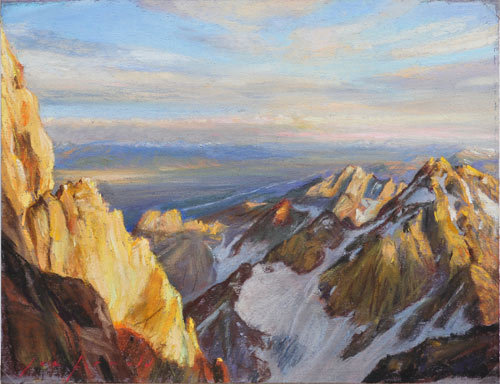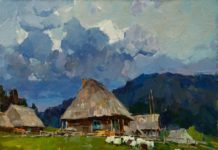Joe Arnold thrills his collectors by painting scenes they find familiar, but can’t immediately recognize.
His paintings can be challenging in other ways, too, making some viewers pause for a second to orient themselves and understand what is up and what is down. The reason: Arnold paints from the sides and summits of mountains.
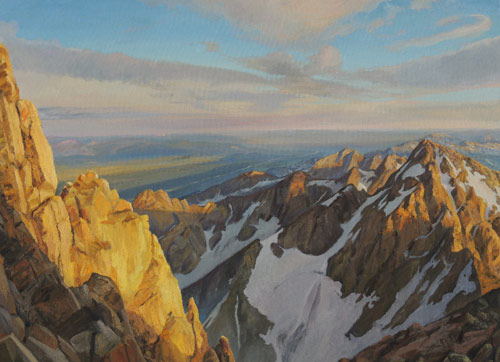
“View From the Upper Saddle,” by Joe Arnold, oil, 54 x 72 in. Studio
“Some of my paintings are almost divided in half between the vertical face and the valley down below,” he says. “It’s not your traditional composition, but it’s striking. It’s almost a little disorienting, but I try to put in some foreground to place you, and keep you from feeling like you are flying all over the place. I do try to create a little bit of vertigo there because that’s part of the thrill of being in the mountains.” In some of Arnold’s paintings, the flatlands are tucked away in the uppermost part of the composition. Down is up.
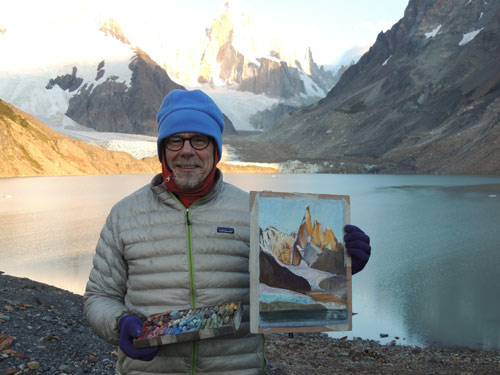
Joe Arnold painting on location — a mountaintop
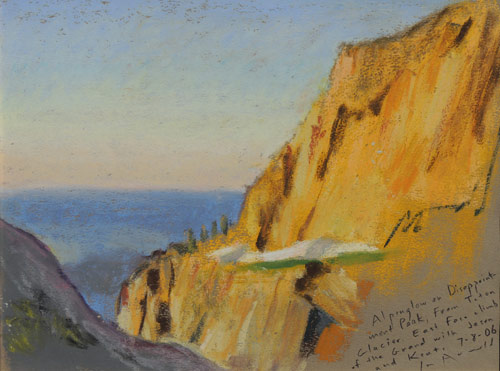
Plein air study of Disappointment Peak from Teton Glacier, by Joe Arnold
Collectors, especially those acquainted with the mountains Arnold paints, like seeing familiar peaks and crags. So do climbers, a segment of the population who generally aren’t thought of as a group with the wherewithal to collect art. “Even climbers who don’t have a lot of money have my paintings,” says Arnold. “They say the pieces show what it feels like to be up there.”
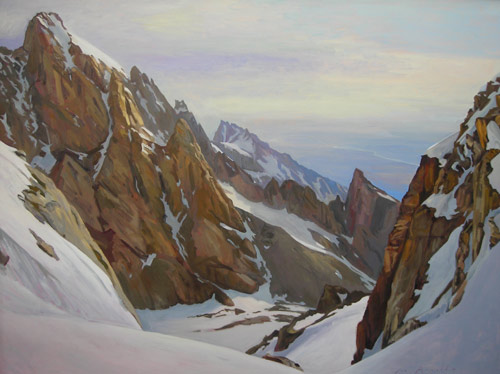
“Above Middle Teton Glacier,” by Joe Arnold, oil, 54 x 72 in. Studio
Some peaks, like those in the Teton Range, are distinctive and iconic. But Arnold’s twist is that he paints from Grand Teton, the 13,770-foot centerpiece of the Tetons. “Grand Teton is a good place from which to paint because other big peaks are nearby to give me the big shapes that I’m looking for,” says Arnold. “I like that people — even Teton knowers — are like, ‘OK, where are we?’ They recognize the peaks, but they can’t figure out where I’m painting from.”
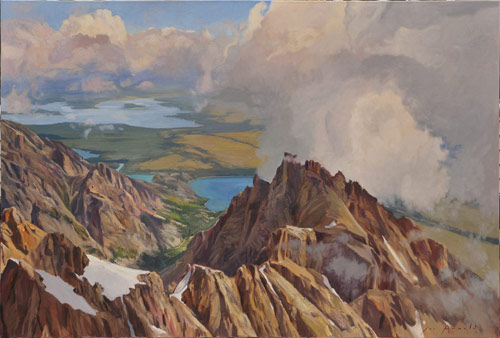
“View From the Summit of the Grand,” by Joe Arnold, oil, 48 x 72 in. Studio
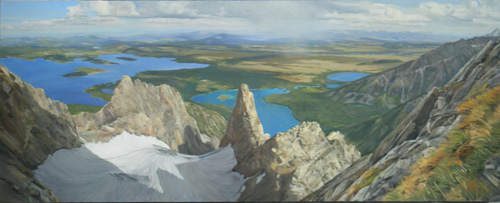
“CMC Route, Mt. Moran,” by Joe Arnold, oil, 38 x 96 in. Studio
It’s a challenge to paint the plein air studies Arnold uses to inform his larger studio pieces. He makes it easier by working in pastel, out of a box he built in 1984. “It’s very convenient,” Arnold says. “I took it with me to Patagonia recently.” He layers his finished 9″-x-12″ pastel paintings between sheets of glassine and sandwiches the stack between Gatorboard or matboard, and tapes the whole package up for the descent. “The pastels can’t rub against anything, so I tape them up,” he says. “The other enemy of pastels is moisture. I carry an umbrella in case it starts raining, and I put the finished pastels in a Ziploc bag.”

“View From Mt. Moran, Dusk,” by Joe Arnold, oil on linen, 14 x 66 in. Studio
All his equipment fits in a backpack, ensuring a minimal setup and a light load. But that’s the end of the convenience. “It seems impossible at times to find a good composition when you are up on the mountain,” says Arnold. “The guy who first climbed the Matterhorn was an artist, and he noted that the compositions are really weird that high up. Trees are little dots, and you don’t have the big shapes that you recognize. It’s a different approach from what’s been done before. I have done all the traditional views of mountains, such as Grand Teton from the ground. I just would like to add something a little bit different to the oeuvre.”

